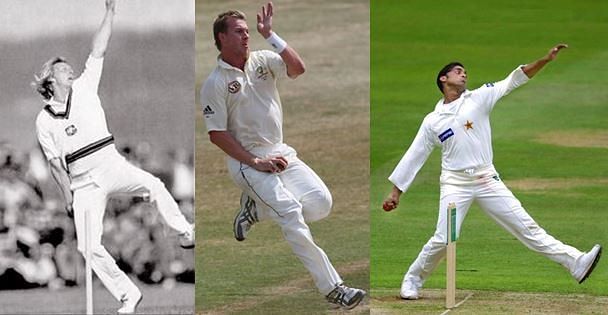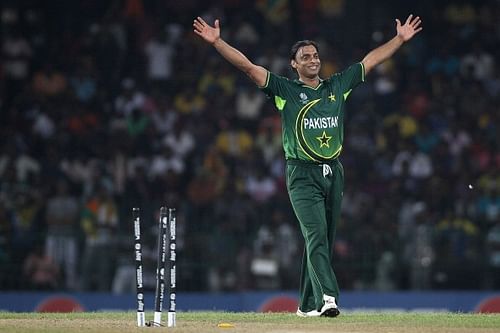
Jeff Thomson vs Shoaib Akhtar vs Brett Lee

The romantics that follow the game of cricket talk endlessly of surreal moments that make the game a truly great spectacle. More often than not, it’s the batsmen that fuel the imagination and fantasy of both fans and connoisseurs alike.
An elegant straight drive past the bowler; a flowing cover drive; a booming pull-shot; these are just some of the stroke filled moments that draw endless praise while elevating the status of the batsman to almost herculean levels.
And in this day and age where the game is packaged to entertain the masses, the batsman is but the sole hero while the bowler stands relegated to the ranks of the “also ran”.
But every now and then when the bails fly and the stumps cartwheel, we gasp and cheer. The thrill of the rare moment provides us with just as much joy as watching the ball sail into the stands. And we’re hooked instantly and clamor for more.
So sold we are on the efficacy of fast-bowling that it becomes an irresistibly thrilling visual. The run-up, the giant leap, and the intimidating grunt before a release adds to the cricketing theater.
Waqar Younis, Imran Khan, and Wasim Akram relied on a combination of speed and swing to scalp their kills while Dennis Lillee added a fair blend of physical intimidation to the craft.
If Glenn McGrath could hit a coin placed at good-length all day long, Malcolm Marshall could perhaps put a dent in it. And whilst the names of such legendary speedsters are aplenty, those that could clock 160kms/h can practically be counted on one’s fingers.
That realm though, belongs to a select few - those that chose speed over all else.
The legend of 1974
In October 1974, a hitherto unknown bowler strapped up for Australia in the opening Ashes Test at Brisbane. What ensued was series-altering. His 6 for 46 in the second innings gave him a match haul of 9 for 105. So captivated was Keith Miller that he wrote, “He frightened me, and I was sitting 200 yards away”. Jeff Thomson had well and truly arrived.
While putting to rest his forgettable debut against Pakistan a couple of years ago, he took to Ashes cricket like a fish to water. His unusual action meant that as he squared up to deliver, the ball was hidden behind the body for a fraction for a second before being hurled at the batsman in a sling-shot manner.
The batsman only got to see the ball just before the release and the reaction time accorded was harrowingly negligible.
England’s only win in the series came in the final Test when Lillee bowled just four overs and Thomson was out injured. Such was the impact of the duo and Thomson in particular that Mike Denness, the English skipper later recalled, “That was difficult for me to take. They (his team) had spent three months fearing for their livelihoods and wondering if they were going to get hit on the head”.
When asked about his pace, Thomson said he thought he was about 161 km/h. He was indeed clocked at 160.45 km/h and 160.58 km/h on two separate instances in 1975 and 1976. And Barry Richards would vouch for the fact - “Just a terrifying fast bowler. I think Thommo was the probably the quickest of everybody”.
“I follow my instinct always”
There was never any doubt that Shoaib Akhtar was going to be quick. But the question. however, was pertaining to his sustained effectiveness. Flair and flamboyance very seldom gel well together and in Akhtar’s case, both these elements were oozing in abundance.
Every time he turned up at the end of his mark, you just didn’t know for sure what to expect. The only assurance one had, however, was that of speed.
Two balls were all it took for Akhtar to stamp his class. And by sending back Rahul Dravid and Sachin Tendulkar of successive balls in 1997, he made sure that his name would prop up in fast-bowling conversations for posterity.
As a shell-shocked Eden Gardens watched in astonishment, the Akhtar brand of fast-bowling began to mushroom. Outspoken and brash, yet menacingly quick, the Pakistani had no two ways about his bowling. He was either going to run in and bowl quick or not bowl at all.

Despite being criticized for his lengthy run-up and often accused of holding up the over rate, Akhtar held his own by retorting that a run-up prior to delivery was akin to that of a plane taxying on the runway prior to take-off.
And he did take off for sure. His 161.3 km/h delivery against England in the 2003 World Cup has been hailed as the fastest ball ever bowled.